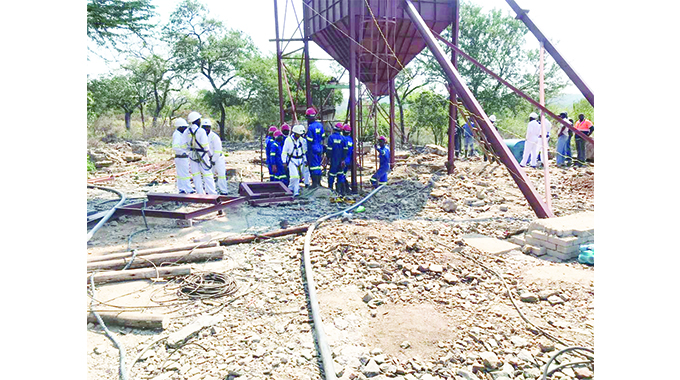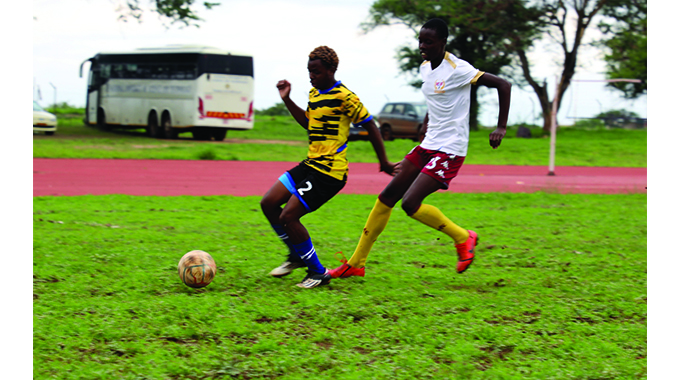Small-scale miners dice with death

Flora Fadzai Sibanda, Chronicle Reporter
EACH time artisanal small-scale miners make their way underground, they carry with them hope that they’ll emerge to the surface with a precious stone that will cater for the needs of their families.
However, the miners work oblivious of the dangers they may come across, especially during the rainy season when the risks are higher.
Most of the miners risk being buried underground as was the recent case of Rania Moyo (22), a small-scale miner from Silobela. He was trapped underground Velocity 36 mine shaft for four days after the shaft collapsed.
Moyo survived by eating soil and praying since he couldn’t access water or food. He never thought he would make it out alive to see his parents once more.
He was lucky to live to tell his tale unlike Rangarirai Hwide, an artisanal small-scale miner who died after the shaft he was working in collapsed while prospecting for gold in Mashonaland East.
In what could’ve been one of the worst mining accidents of the year, seven miners died after hoisting ropes bringing them up a shaft snapped and plunged down 240 metres at Bucks Mine in Colleen Bawn.
Rescue workers spent days pumping out water from underground before they could retrieve the bodies of the trapped miners.
Last month, a gold panner died and four others escaped unhurt after a Bulawayo City Council quarry pit in Parklands suburb collapsed on them while they were illegally mining gold.
Mining experts said most of the miners are trapped underground during the rainy season because they don’t prepare adequately for the rains.
They said most of the miners are not well informed when it comes to taking extra caution during the rainy season when the soils become extra damp and easily cave in.
Mthandazo Women Miners Association secretary Mrs Mthandazo Ndlovu said negligence is the leading cause of the collapsing mine shafts and pits.
She said a significant number of miners are still using primitive methods highlighting the need for them and their owners to take the necessary precautions in order to avoid accidents.
The mining expert said there are some procedures that should be followed before the rainy season.
“A shaft should have more than one exit passage. It should have an emergency one which will act as an escape route should the initial entrance cave in. There should also be tunnels that will help to channel the water and ensure that it doesn’t flood the shafts,” she said.
Mrs Ndlovu said all miners should be under an association that will ensure that they follow all the safety procedures that miners need to adhere to.
She said more awareness campaigns should be carried out at mines, especially among the miners as they are the ones who go underground.
Mrs Ndlovu said the awareness campaigns should include trainings, particularly among younger miners, who now dominate the industry.
“The sector is now dominated by young people who should be taught about ways of avoiding disasters and protecting themselves when they’re underground. These youths are not mature enough to behave properly and avoid such disasters,” she said.
“The ground doesn’t just collapse on top of a person. It gives you a sign that it’s about to collapse. That’s where maturity comes in. The miner should know what to do if the ground gives that warning because if one is not able to do this, the ground might fall on top of them while they’re still panicking.”
Mrs Ndlovu urged mine owners to take good care of their shafts so that they can protect their workers.
Gwanda Youth in Mining Association chairperson Mr Philemon Mokuele, said the major challenge that most miners face is inadequate planning and preparation for the rainy season.
He said most mines have water flooding inside them because miners don’t dig trenches and adequately plan ways of avoiding shaft collapses which cause loss of life and injuries.

Mr Nathan Nkomo
He said another big challenge that they face as miners and is often not talked about is lack of good infrastructure adding that most of the homes are not in good condition which puts most miners at risk of illness and homes collapsing on top of them.
“Most shafts are not protected so when the soils get damp, they give in and weaken the supporting grounds causing collapses,” he said.
“Mine owners should be challenged to protect their workers’ lives. They should be bothered that their workers are working in dilapidated areas. Once they do that, a lot of incidents can be avoided,” he added.
Mr Mokuele said miners and mine owners should be educated on ways of taking precautions during the rainy season.
In November 2020, rescue teams tasked to retrieve six miners trapped in a mineshaft in the Matshetshe area in Esigodini had to abandon their mission because the mine was flooded with water, making it too risky for them to proceed with the operation.
The six miners were never found after the mine they were working in collapsed following heavy rains that had pounded the area.
In a recent interview, Civil Protection Unit (CPU) director Mr Nathan Nkomo said gold panners should be cautious in their mining activities and adhere to the correct methods of mining.
He said due to lack of proper training in mining, gold panners are at high risk of being trapped underground during the rainy season.
“Usually, gold panners who conduct mining activities by following a gold belt don’t take extra caution when they’re underground. Some of them don’t care even if they’re mining close to a river bank,” said Mr Nkomo.
He said Government has set aside a budget to deal with natural disasters, including incidents involving miners who get trapped in the course of work.
“As CPU, we’re going to continue educating and raising awareness targeting gold panners about the dangers of mining during the rainy season. During this time of the year, the ground becomes weak making it susceptible to collapsing,” said Mr Nkomo. — @flora_sibanda










Comments